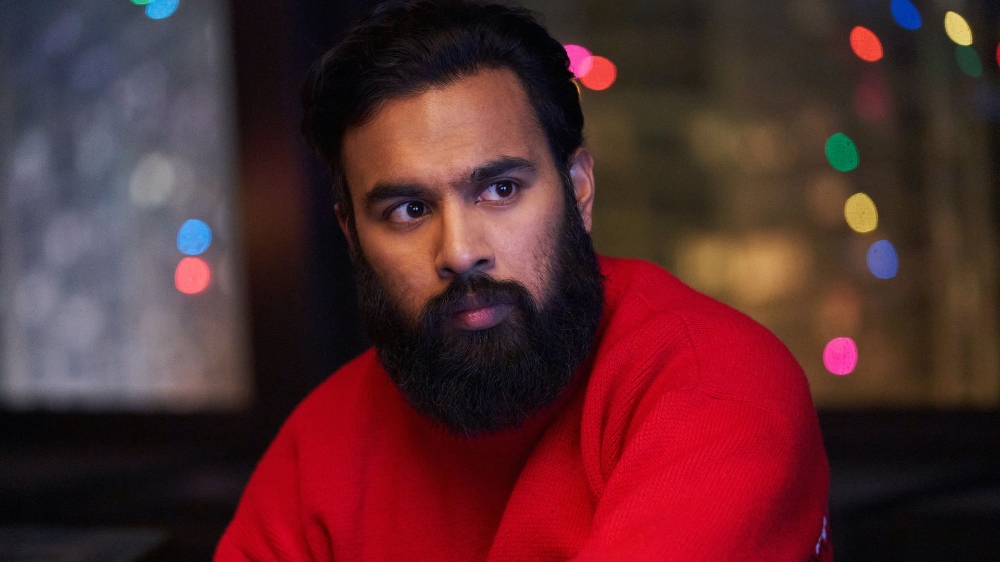
Emily St. John Mandel‘s award-winning 2014 novel Station Eleven describes the aftermath of a pandemic that kills 90 percent of the global population. Combining elements of mystery and science fiction, the book built a dedicated fan base en route to selling over a million copies. When novelist Patrick Somerville adapted Station Eleven into a 10-part miniseries, the story’s deeply emotional themes once again connected strongly with viewers who were enduring a pandemic of their own.
The acclaimed HBO Max series stars Mackenzie Davis as Kirsten, an actor who leads the Traveling Symphony theater troupe. The character is portrayed brilliantly as a child by Matilda Lawler, who shares scenes with Himesh Patel and his character, Jeevan Chaudhary. The post-apocalyptic series co-stars David Wilmot, Daniel Zovatto, and Caitlin Fitzgerald as well as Gael Garcia Bernal, Danielle Deadwyler, Timothy Simons, Enrico Colantoni, and the great Lori Petty.
Somerville and director Hiro Murai worked on two episodes before Covid brought production to a halt. When shooting finally resumed, executive producer Jeremy Podeswa directed three episodes, including the final two.
Podeswa has worked on landmark shows like Game of Thrones, which earned the director an Emmy nomination, while his other TV directing credits include multiple episodes of Queer as Folk, Six Feet Under, Nip/Tuck, Carnivale, The Pacific, The Tudors, Boardwalk Empire, The Newsroom, and The Handmaid’s Tale. He recently spoke to Below the Line by telephone:
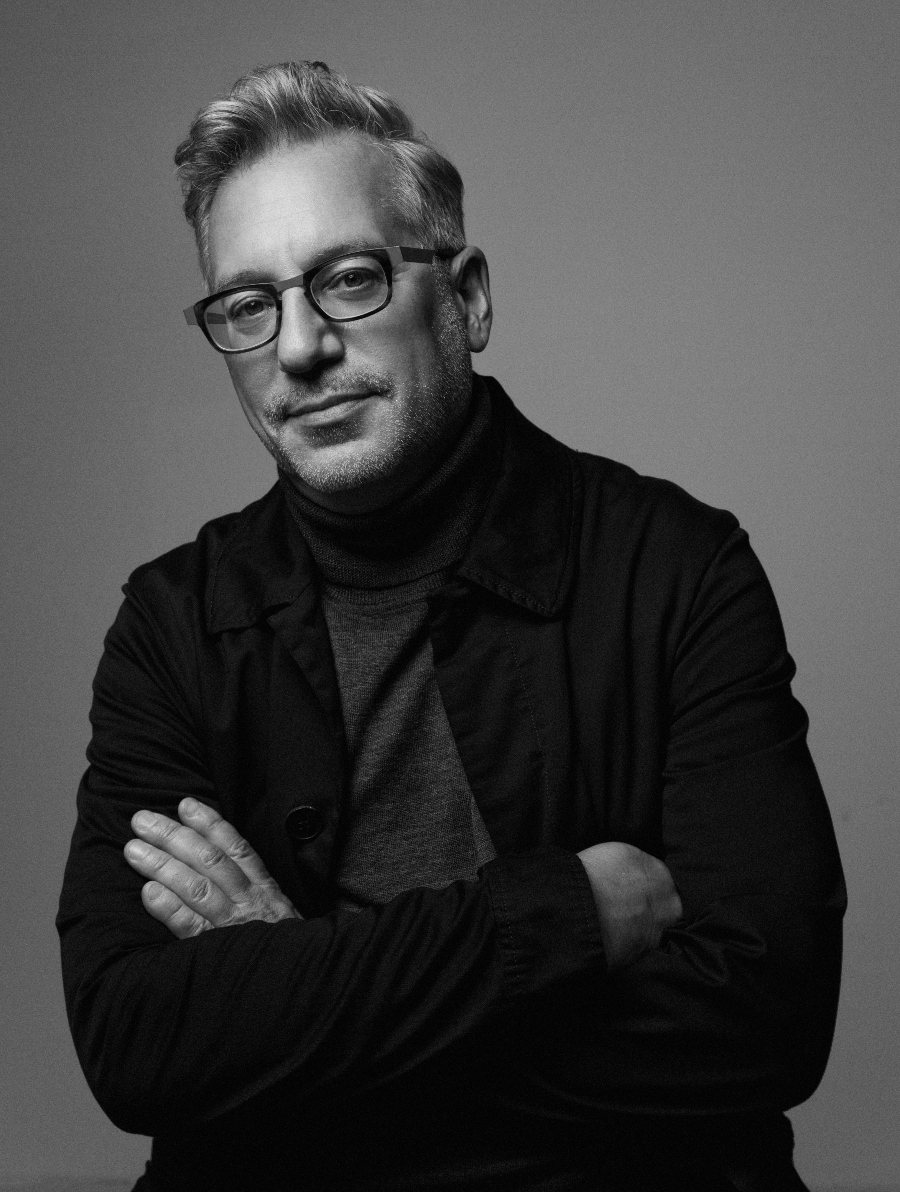
Below the Line: I’m not familiar with Emily’s book, so how closely do the scripts for Station Eleven follow the original novel? Do the shifting timeframes figure in both?
Jeremy Podeswa: The book does move around between characters and timeframes. It moves off into different realms quite fluidly, but Patrick made some significant changes. He took this idea of interwoven stories and made some extensions between characters that are not in the book. Emily set the template, and Patrick played with that structure.
BTL: You directed Episode 2, which finds Kirsten in the Traveling Symphony some 20 years after the pandemic. You also directed Episode 9, which focuses on Kirsten’s guardian Jeevan, as well as the finale.
Podeswa: I was so excited about Episode 9. When the scripts were delivered, we discussed which episodes I should direct. I really wanted to direct Episode 9. It’s this self-contained story that answers a lot of questions. It sets up the finale without telegraphing it.
BTL: Did you have the same crew for all of your episodes?
Podeswa: It was one crew for the entire show, except for the DP and AD teams. I worked with Steve Cosens. He also shot Episode 5, which Lucy Tchernaik directed.
We shot everything out of order. We shot the winter episode, Episode 9, quite early in the schedule, before we shot Episode 2, which needed the most luscious, summery kind of vibe that we could achieve. The finale was shot somewhere in the middle of the schedule because it was largely set in interiors. We had to bridge the seasons from winter to summer, and one way to do that was at the airport. It was quite unusual shooting the entire show out of sequence like that.
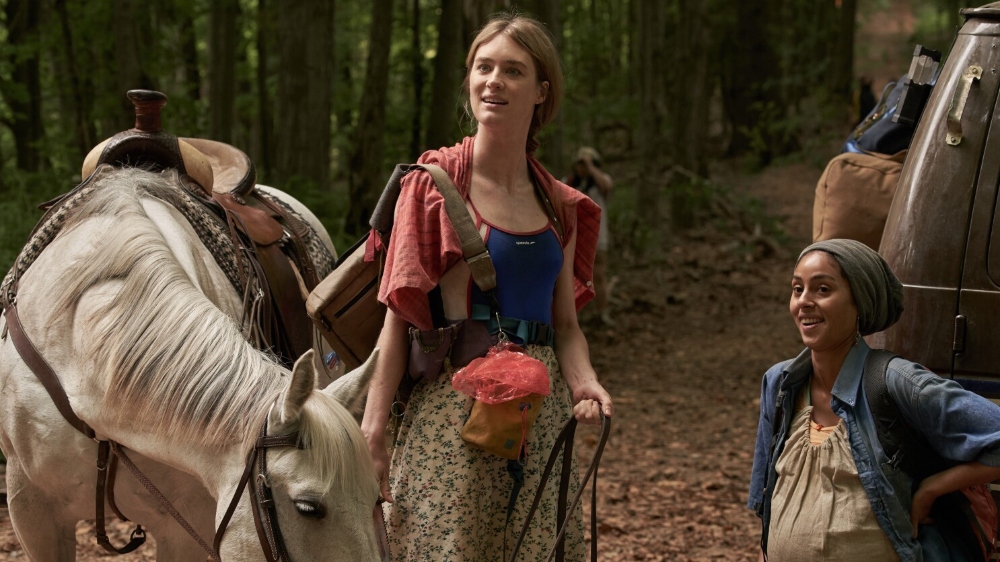
BTL: In our interview with Steve Cosens, he talked about how cold the locations were for Episode 2.
Podeswa: No heating or insulation in that house. When we went there to prep, it was colder inside than outside. It was an incredibly beautiful location that was worth every bit of discomfort. It was so unusual to be in a place that was completely silent. All the sounds were muffled by the snow, and the week we were there it was constantly snowing. The scenery was always being refreshed, which is something you can’t fake.
BTL: Your episodes contain long narrative stretches with hardly any dialogue. They’re really effective because you are so careful about perspective and point-of-view.
Podeswa: With Episode 9, I really wanted to get inside Jeevan. We have a lot of Kirsten contemplating her past or even revisiting it in the series. I had the chance to change the lens a little, pull the focus in a different direction. With Jeevan, the settings are like a fairy tale, very poetic, so they don’t need a lot of dialogue. The whole first half is visual storytelling with very sparse dialogue.
Shooting it was very intuitive. I found I was very responsive to the environment. The sequence in the maternity ward was one of the more terrifying things I’ve directed because it was so delicate tonally. These pregnant women having a kind of cosmic synchronicity in the midst of so much loss was such a fanciful and strange idea. A big hats off to Ruth Ammon, the Production Designer, who did an incredible job with the location, and to Steve for helping find the way to shoot it.
We rehearsed that extended birthing sequence the most out of the entire show, apart from the Shakespeare stuff. We brought in everyone on a weekend and blocked out all the scenes. I had a doula come in, we had birthing experts.
It was important that everybody understood the gravity of what all these women had recently been through. We really spoke about the trauma, to be pregnant and alone and without your partner. What does it mean to go through all that loss? And then to give life again?
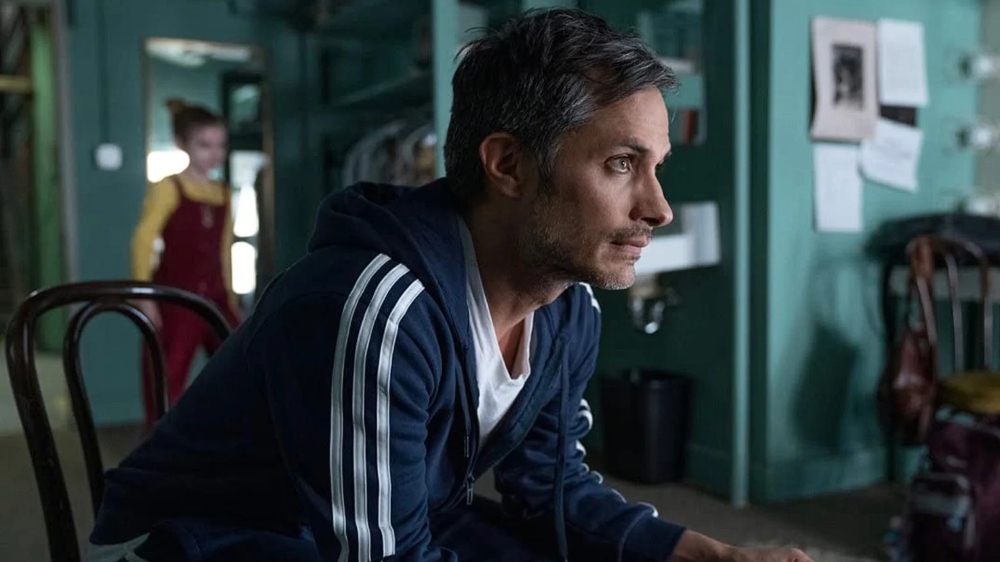
BTL: What I’ve noticed about your work here and on other series is how carefully you define your characters’ emotions.
Podeswa: That’s really important generally. I’ve done a lot of shows where you’re dealing with highly stylized narrative notions. They’re so execution-dependent. I always go back to, ‘I have to feel something, I have to relate and connect to the story and characters.’ I think why the book was so successful is that people are incredibly moved by what Emily’s saying. It’s partly the story, but it’s also what she’s saying about humanity, about people’s capacity to overcome trauma and adversity, to create art. To find a reason to live when it’s not so obvious that there is one.
BTL: The final episode includes a staging of Hamlet that is just astonishing. I don’t know how you made those brief scenes resonate so strongly.
Podeswa: It has to work on a number of levels. They’re playing Hamlet, which is Hamlet, but it’s also the psychodrama of what’s actually happening between Tyler (Zovatto) and his mother Elizabeth (Fitzgerald), and everyone else on the stage.
Patrick’s genius was to reinforce the parallels between Shakespeare and the story of Tyler and his mother and how they play into the whole idea of loss. Because that’s what Hamlet is about. Hamlet mourning his father is really everybody mourning in Station Eleven.
We rehearsed this like a play. Chris Abraham, who has directed Shakespeare, was our advisor. He would speak about how the scenes are normally played. Then, what’s our version of that? We’re balancing perspectives — it’s Hamlet in an airport, but all the characters recognize how much of their lives parallel the story they’re creating on stage.
You probably don’t realize this, but the stage is really small. The amount of space the actors had to move around was really constrained. Blocking comes from the actors, not me. Once the actors find it, then that’s what it is. We got together on a weekend and rehearsed the scene quite extensively. We actually mapped out the stage on the floor because we didn’t have the set yet.
We let them play it and see what it felt like. In the end, the blocking you see in the show is the blocking that arrived out of this process, where people ended up where they wanted to end up organically as they felt it needed to be played.
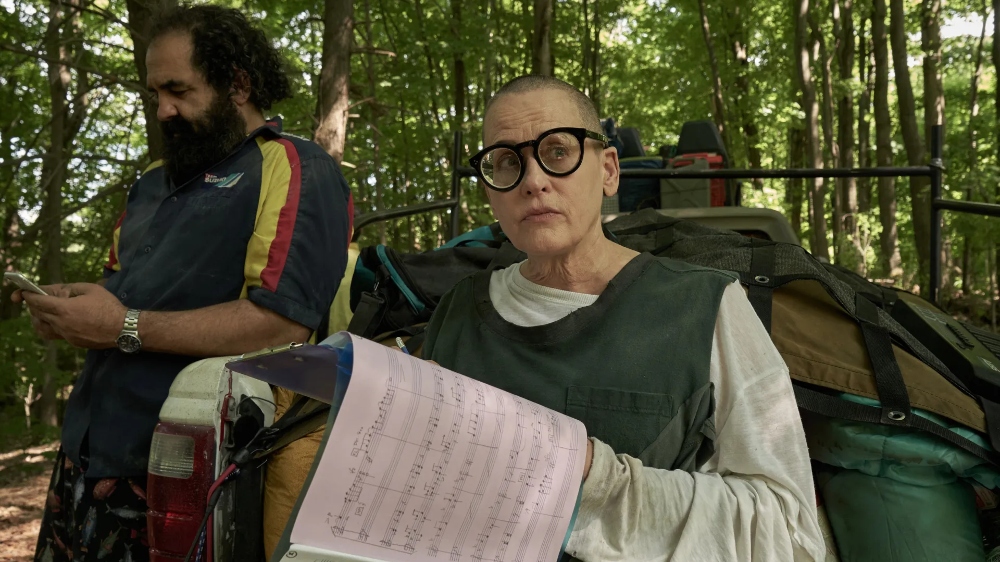
BTL: How did you break down the shifting points of view in that scene?
Podeswa: We use a subjective camera. You should forget at a certain point that you’re watching Hamlet. The intimacy of the camera as it sort of comes in, we’re on stage with them, in the play with them.
The scene begins in a quite presentational fashion. Clark (Wilmot) and Elizabeth as Claudius and Gertrude, coming onto the stage before Tyler as Hamlet. That’s all very straightforward. When Tyler enters, the camera comes in closer and closer. We see the audience from the stage behind the actors. They become the background. It’s an inversion of the theatrical presentation, it’s no longer the audience’s perspective. So I guess the strategy is through the course of the scene, go from the normal presentation of a play to, we’re playing a scene between two characters. It’s hardly about Hamlet at all at that point. It’s suddenly Tyler talking to Elizabeth. It’s not Hamlet talking to Gertrude.
BTL: There’s a scene where Kirsten and Jeevan are walking in a forest, and reach a fork in the road.
Podeswa: I love that scene so much. We scouted so many forests for the show. I was scouting for all the episodes, even the ones that I didn’t direct, because I was there before everybody else was. Anyway, many, many, many locations. I had this idea in my head of what the fork should look like. And strangely enough, we couldn’t find it.
Finally, we came to a location that was not what I wanted, it was something else. Sort of interesting, but a different kind of road, and not one in a forest. I asked if I could have like a few hours just to look for something else. As soon as we saw it, this was the place.
Locations really speak to me. Once you see it, you kind of know how to stage it, how to shoot it, all that stuff. It was perfect and completely natural. The main thing here was just to shoot it very, very simply. It’s just a series of shots walking behind Kirsten and Jeevan, walking in front of them, and then side to side. It’s about the performances really. I didn’t want to do anything too fussy with it because it’s all in the dialogue and in the actors’ work. And then just that beautiful last image. From a shooting point of view, it’s very simple.
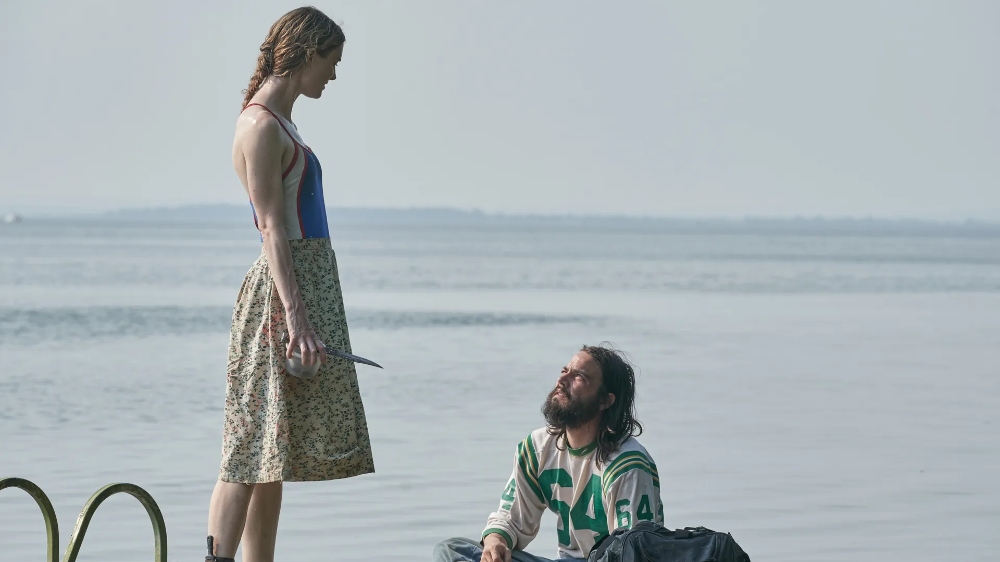
BTL: You say it’s simple, but I’m tearing up just thinking about it. When to shoot from the side, from the front — these are crucial choices that determine how viewers respond to the scene.
Podeswa: I think what you’re describing is editorial, when to cut from him to her, when to be in a two-shot. I cover things so the editors have some flexibility. In the edit is when you really find the emotion and who you want to be on.
We shot it straight through for the actors. Their emotions are building as they’re walking and talking. From the moment she says, “You know, you walked her home,” it’s just devastating. We filmed it so that they could arrive at that spot and we continued filming through rather than, you know, ‘Okay, now we’ve done the moving part. Now we’ll do the stationary dialogue.’ It all needs to flow.
Then it’s like, ‘when is the right time to cut? How long can you stay in one shot?’ That’s really what the emotion is about. There was nothing fancy about the shooting. I was just getting out of the way. Of course, there are lens choices, when to shift focus, but to me, it’s an incredibly intuitive process. You just feel it.
It’s so much about casting and directing the actors. Yes, the shots have to be the right shots. If you put the camera in the wrong place, you’re not going to feel anything. Something I learned a long time ago is that an actor can be doing everything, but if the camera’s in the wrong place, you won’t see it. If you’re like 15 degrees to the right or to the left, you miss it.
It’s kind of trusting your gut that, ‘if I adjust this, it’s going to work.’ Episodes 9 and 10, they’re just full of those emotional moments. When I watch them, I cry all the time. We just hit it. The camera’s in the right place, the actors are doing exactly the right thing, the words are perfect. By that point in the series, you’re ready for it. You’re ready for this outpouring of emotions. You’re so invested in these characters. So it’s a kind of alchemy of all these things, everybody doing their jobs right.
I have to give it to Himesh and Mackenzie. They understood the complexity and depth of this relationship completely. And that’s why that scene is so laden with meaning.
Station Eleven is now streaming in its entirety on HBO Max.





